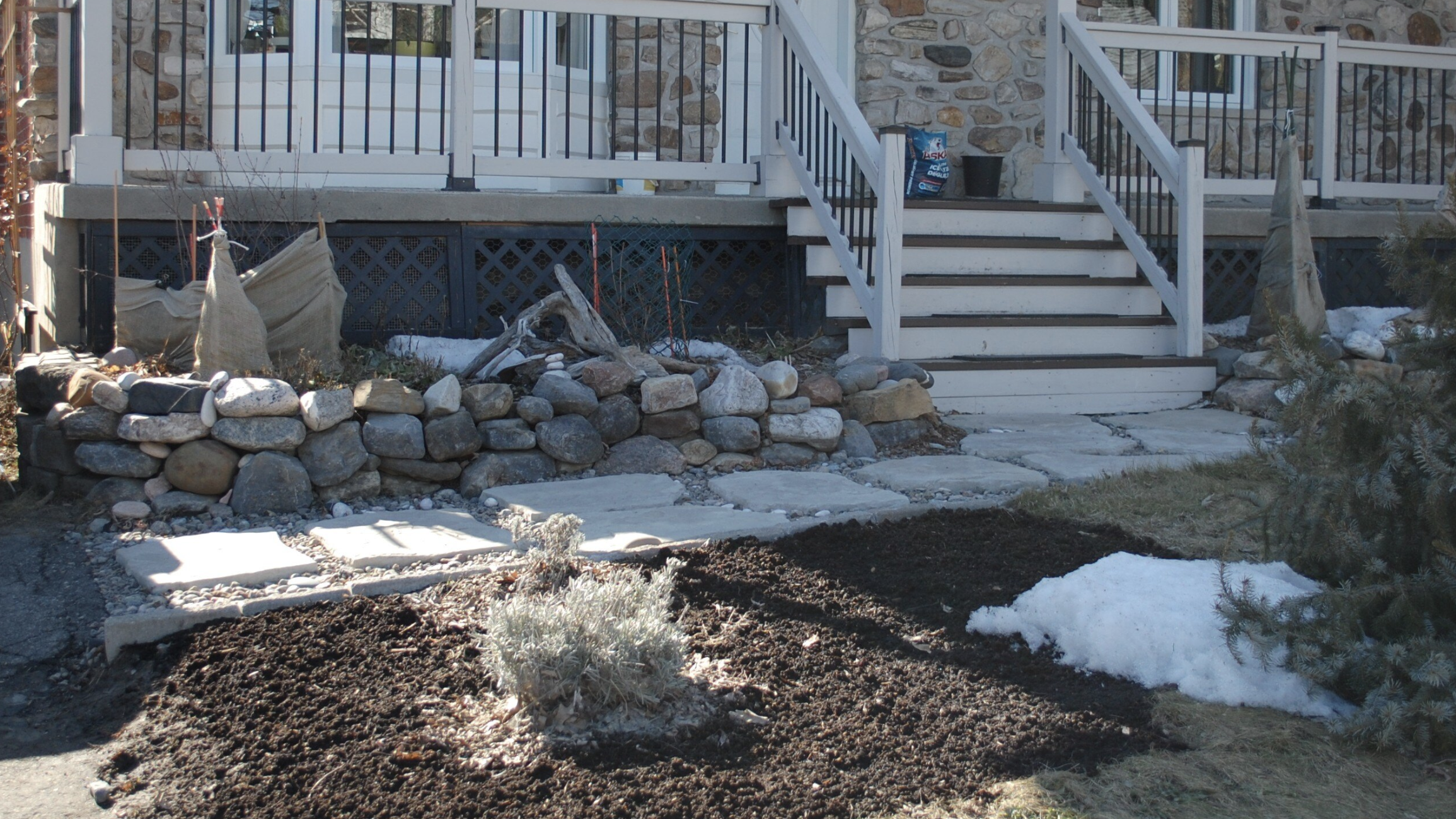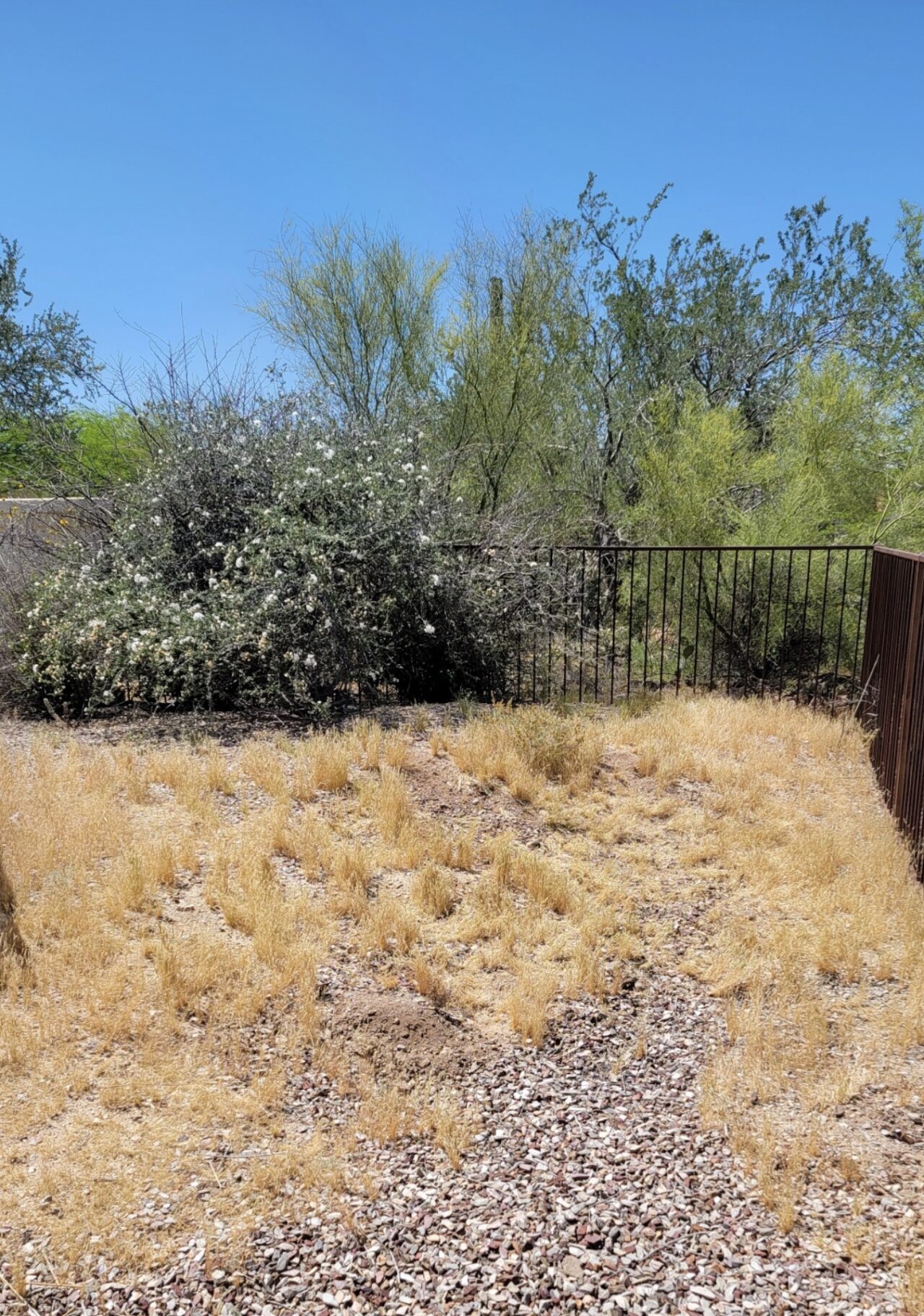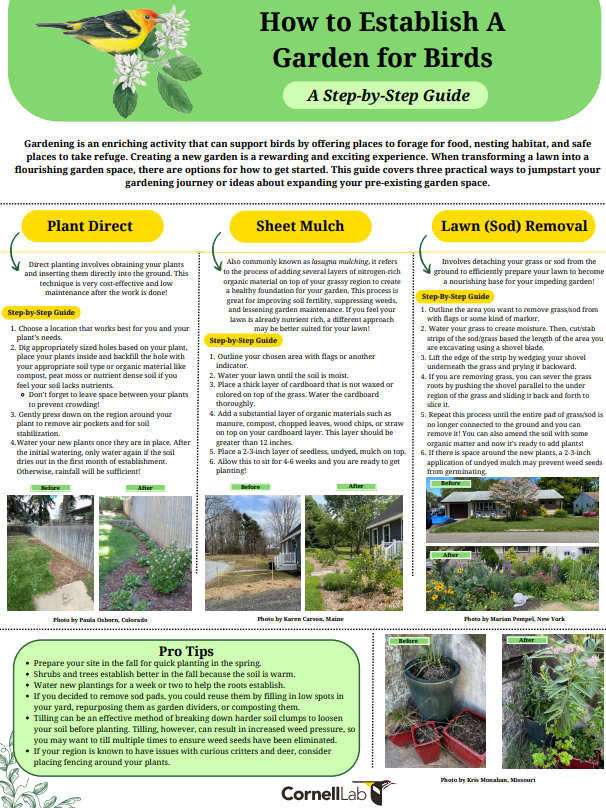Garden for Birds
Join this community initiative to take action to support birds.
Habitat Pictures
Be inspired by how many other properties around the United States and Canada are engaged in transforming a portion of their landscape to better support birds and biodiversity.
Seeing is truly believing! Explore before and after photos of landscapes that added new plants this year.
Every spot and plant matters to the wildlife that depends on it.
Before

After

Month-by-Month Guide
Each month between March-November you’ll receive an email with a different checklist of actions. Depending on your growing region or schedule, you may be ahead of this list or trailing a bit behind. Don’t sweat it, but make sure to do the step(s) specified each month.
August Checklist:
__ Take an after picture of your garden or plant and submit it here. Same spot as your before picture. Limit to just one please!
__ Watch your gardens. Birds are starting to move. Water new plants if necessary.
Optional, but encouraged:
__ Register for Leaving Our Fall Gardens with Doug Tallamy on Tuesday, September 9 at 7 p.m. ET / 4 p.m. PT
__ Calculate your Wildr Score
__ Treat your windows to prevent bird collisions.
__ Review Invasive Species FAQ or rewatch the Invasive Plants webinar with Mhairi McFarlane.


July Checklist:
___ Monitor birds in your gardens.
__ Heat waves? Water new plantings.
__ Potted natives? Add water, pots dry-out quickly.
Optional, but encouraged:
__ Add a bird bath or other garden feature.
__ Register for Invasive Plant webinar on Thursday, July 17, 7p.m. ET.
__ Explore Before Photos
__ Join Garden for Birds eBird Project
- Regular eBirder: Join the GfB Project.
- NEW to eBird: Learn how to do a checklist and join.
Reminder:
__ Upload before picture here by July 31.

An Important Note About Netting Re: July Email
You may be trying to protect your native plants from deer and rabbits. Whatever you use, make sure you install it thoughtfully, and monitor carefully to ensure animals don’t get trapped. Netting and wire should be kept very tight. Use rocks or logs close to the ground instead of netting to reduce the likelihood of snakes, turtles and small mammals becoming entangled. If you install tall fencing against deer, add some ribbons or similar to make sure it is visible to running animals and low-flying birds. Be thoughtful about what other wildlife might use your greenspace and make sure to keep them safe. Once your plants are established, they may be better able to withstand some grazing pressure, and you may be able to remove herbivore protections.
June Checklist:
__ Monitor birds in garden(s)
Optional, but encouraged:
__ Join Garden for Birds eBird Project
- Regular eBirder: Join the GfB Project.
- NEW to eBird: Learn how to do a checklist and join.
__ Register for Invasive Plant webinar
__ Begin to Identify Invasive Plants
__ Explore Before Photos

May Checklist
__ Dry soil? Add water, if necessary.
__ Plant new native plant(s) when ready.
__ Upload Before Pictures by July 31.
Optional, but encouraged:
__ Participate in Global Big Day
__ Add Predator Guards to Nest boxes


April Checklist
(Southern U.S. Regions)
__ Nurture your plant(s). If it’s hot and dry remember to water your new plants until they are established.
__ If you have not yet shared it, upload your before picture here.
__ If you haven’t obtained your plants, do so soon.
- Shop local nurseries, if possible.
__ Check-out NEW Container Plant Resource.
Optional but encouraged:
__ Complete the pre-survey by April 7
__ Register and attend Benjamin Vogt’s April 1 talk on Unlawning our Landscapes, 7 p.m. ET / 4 p.m. PT.
__ Clean out Nest boxes or install one (see tips at the end of this email).
__ Never miss a step, integrate your Google Calendar with ours!


April Checklist
(Rest of Regions in U.S./CAN)
__ Decide on your spot and what to plant.
__ Upload your before picture here.
__ Decide where to get your plant.
- Shop local nurseries, if possible.
__ Check-out NEW Container Plant Resource.
Optional but encouraged:
__ Complete the pre-survey by April 7
__ Register and attend Benjamin Vogt’s April 1 talk on Unlawning our Landscapes, 7 p.m. ET / 4 p.m. PT.
__ Clean out Nest boxes or install one (see tips at the end of this email).
__ Never miss a step, integrate your Google Calendar with ours!
March Checklist
(Southern U.S. Regions)
__ Identify where you will plant your plant.
__ Consider what to plant & where to get your plant.
__ Take a before picture and upload it.
__ Bookmark Garden for Birds Page for quick reference.
Optional but encouraged:
__ Complete the Pre-survey
__ Register for Benjamin Vogt’s Unlawn Our Landscapes by Adding Native Plants on April 1 at 7p.m. ET / 4p.m. PT.

March Checklist
(Rest of Regions in U.S./CAN)
__ Identify where you will plant your plant.
__ Consider what to plant & where to get your plant.
__ Bookmark Garden for Birds Page for quick reference.
Optional but encouraged:
__ Complete the Pre-survey
__ Register for Benjamin Vogt’s Unlawn Our Landscapes by Adding Native Plants on April 1 at 7p.m. ET / 4p.m. PT.
Upcoming Live Event

Leaving our Fall Garden Resources with Doug Tallamy
September 9th at 7 p.m. ET / 4 p.m. PT
What We’ll Discuss:
This live event will build on the Leaf It Pledge which is designed to advocate for leaving the leaves to benefit birds and local wildlife. Doug will discuss how fallen leaves and garden resources provide vital habitat, food, and spring nesting materials — all benefits to birds and biodiversity. His wealth of knowledge will inspire you to look at fallen leaves with a new found respect.
Our Collective Garden Birds
Birds are in our gardens! See what people are seeing all over the United States and Canada. If you would like to share garden checklists, considering joining our eBird project and submit your birds to our collective totals. It is fun to see what everyone is seeing in their greenspaces.
Need help joining the project or using eBird? These tips may help.

NEW Resources to Support Your Process
Container-suitable Plants
Find success planting in containers! Use these U.S. & Canada regional guides to find native plants suitable for your pots.

New to Gardening
Here is a concise one page document that discusses how to garden for birds with links out to helpful resources.

Starting a Garden
If you are breaking ground for a new garden, here are three strategies to consider to make your garden successful.

More Resources to Support Your Efforts
Search for Natives
We’ve chosen a selection of websites that will help you as you learn more about native plants you want to add to your property.

Deer Are an Issue
If deer are frequent visitors to your garden, use these regional plant lists to help you find less palatable options for browsers.

Planting Palette
Take a play out of a landscape architect’s play book. Use this tool for experienced gardeners who are trying to maximize resources.

Watch This 2-Minute Video to Learn Why Gardening for Birds Matters
Along the Way
We’ll provide you with ideas, tips, and tricks to deepen your journey in supporting birds at home and in your community.
In addition, we’ll offer discounts on native plants and bird-friendly goodies from Garden for Wildlife!
This project runs from March – November. Completing all steps of the project will enter you for a chance to win one of 15 gifts. We currently can only support U.S. and Canadian residents who speak English.
Participation is voluntary. If you decide this project isn’t for you, you can withdraw from the project directly from any of our emails.

Garden for Wildlife Partner
In collaboration with Garden for Wildlife, we’ll help you find the right plants for your yard.
Sometimes knowing what to plant and where to get those plants can be half the battle in planting for birds. Garden for Wildlife will make these decisions easier on your mind and your wallet.
Since 1973, Garden for Wildlife™ by the National Wildlife Federation has empowered individuals to transform their spaces into wildlife-friendly habitats using native plants. Our plants support birds, bees, and butterflies and are grown without harmful chemicals by a network of local growers and shipped directly to your doorstep.
Garden for Birds is Underway!
Thank you for joining us. If you are learning about this project after March 7, 2025 and are interested being a part of this effort, please email gbbc@birds.cornell.edu.
Stay connected to the Great Backyard Bird Count.
By subscribing to stay connected to the Great Backyard Bird Count, you agree to receive communications from The Cornell Lab, Audubon, and Birds Canada. You may unsubscribe from any of the organizations' communications at any time.



